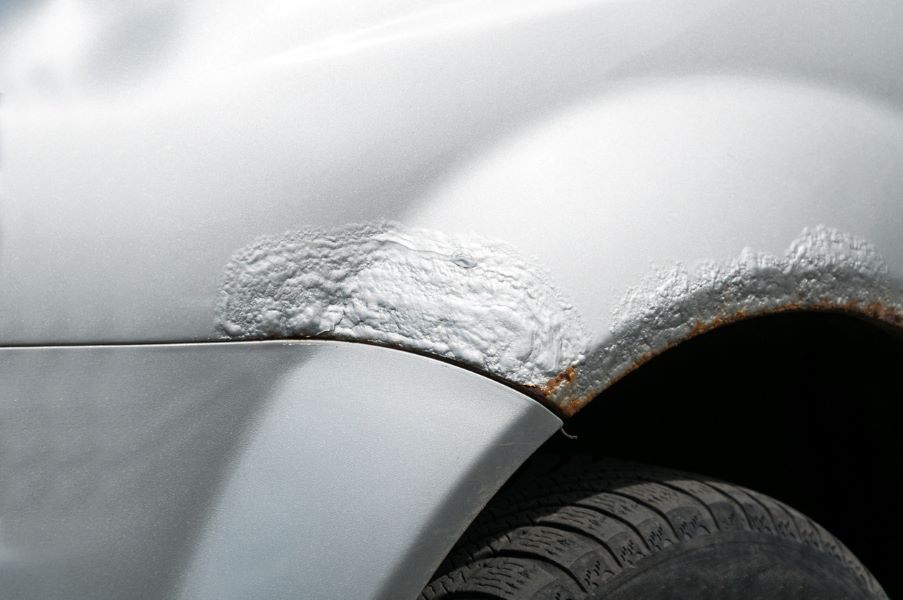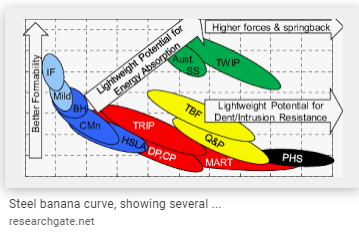Lightweighting vehicles means making sure the lightest materials suitable to the job are used in the manufacture of vehicles. By lightweighting, manufacturers aim to create vehicles that have better handling and fuel efficiency than their heavier counterparts.
Some of the materials that are used present challenges when it comes to preventing corrosion, so a corrosion prevention strategy must be implemented when pursuing lightweighting in the automotive industry.
Strategy for Material Weight Reduction
Higher strength steel for underbody structural components is used in order to reduce the weight of an automobile. As we go for a thinner gauge high strength steel in place of a thicker, lower strength grade, stiffness values may get compromised.
Using a thinner, higher strength steel helps designers to achieve the required weight reduction. However, corrosion becomes a concern since a thinner piece of steel may fail in a structural manner. The thinner steel may get affected by corrosion faster, by achieving the critical thickness at which such failures could occur while compared to a thicker steel. Therefore, additional measures for controlling corrosion are needed when we try to achieve weight reduction by using a thinner gauge steel.
Four main factors are responsible for the overall corrosion resistance: material, design, manufacturing process and post-coating.
Types of Corrosion:
Four types of corrosion are important in case of an underbody structural components: crevice, pitting, galvanic and cosmetic. (Read also: The 8 Most Common Types of Metal Corrosion.)
Crevice corrosion is normally associated with small volumes of stagnant solution or electrolyte that gets trapped in crevices of joints or in surface deposits and poultices.
Pitting corrosion is a localized attack, which is generally caused by chlorides as pits form, that results in a roughened surface. Crevice and pitting corrosion may lead to steel perforation and premature functional failures.
Galvanic corrosion occurs when dissimilar metals are in contact with one another. For example, an aluminum component in contact with a steel component may get corroded, or it can sacrifice itself, to protect the steel component.
Corrosion which initiates on a visible surface of a vehicle, usually at sharp spots or scratches in a post-coating, is called cosmetic corrosion. In most of the cases, cosmetic corrosion is aesthetic; however, it may subsequently lead to more severe damage, including perforation.

Steel Grades
There are various grades of steel that are available for automotive structural components.
- Low-carbon, formable steels have yield strengths up to 260 MPa.
- Dent resistant steels have yield strengths up to 280 MPa.
- High-strength steels have yield strengths up to 830 MPa.
- Ultra high-strength steels have tensile strengths up to 1500 MPa.
Most of these types of steel can be supplied with a metallic coating, such as zinc, zinc-iron or aluminum for enhanced corrosion protection.

Coatings
Underbody structural components are normally coated to provide a first line of defense against corrosion. Commonly used coatings include conversion, hot melt wax, electrocoat, metallic, organic, autodeposition and powder. Phosphate conversion coatings are employed to enhance paint adhesion, thereby indirectly enhancing corrosion resistance
Coatings like an epoxy-based base coat followed by an epoxy-based top coat are often used in commercial vehicles.
Powder coatings of epoxy, polyester and hybrid are common for underbody components. The drawback in case of powder coatings are that they can’t be used inside sections due to access issues.
In case of wheel rims, an acrylic based top coat is required over the epoxy coating for a better weathering resistance, which otherwise could result in the coating getting white chalking marks and may subsequently lose a measure of its corrosion resistance. (Read also: How Metallic Coatings Protect Metals from Corrosion.)
Manufacturing Processes and Design Considerations
A vehicle underbody is made by assembling many components. The processes used to manufacture the components and the methods used to join the components play a significant impact on the corrosion resistance of an underbody. When designing parts and joints, it is of the utmost importance to ensure that coatings access individual parts and joints. Normally openings are provided in parts for coating access and drainage. The openings must be strategically located so that there is no compromise to structural integrity.
Normally the E-coating which is used for the underbody lacks the ability to throw a coating into a long, closed section. One approach to overcome this problem is to have holes along the length of the section. The coating achieved inside the section depends on the location, size and frequency of the holes. Similarly, holes are required so that entry of hot melt wax or powder is possible into a closed section.
Corrosion Testing
Corrosion tests must simulate field service conditions as closely as possible and can be divided into two broad classes: accelerated laboratory tests and field tests. Laboratory tests may involve the testing of small coupon specimens or the testing of a fully assembled component. Field tests may include the testing of specimens which are attached to vehicles subjected to a specified length of field service. (Read also: Corrosion Assessment: 8 Types of Tests that Help Engineers.)
Conclusion
Lightweighting vehicles can use a number of techniques. When it is achieved by using lighter steel, it opens the door to potential corrosion issues. By planning for the possibility, being aware of the types of steel and corrosion, using the right coatings in the correct places, and ensuring you have proper testing in place, manufacturers can prevent corrosion problems from plaguing their vehicles.